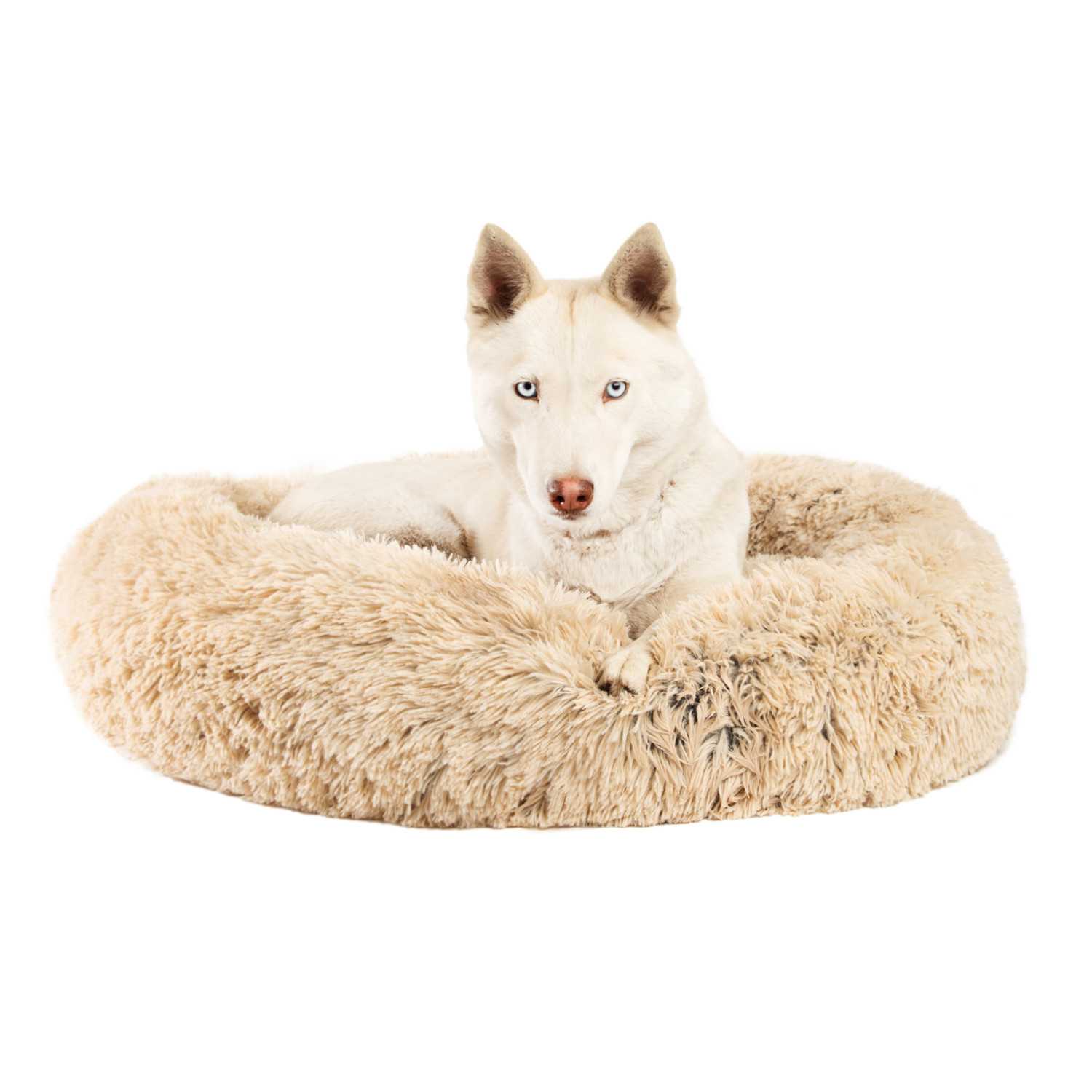Our animals can’t tell us if they’re anxious or stressed, so it’s up to us to identify the signs and do something about it. While there’s nothing wrong with medication, there are ways to provide natural anxiety relief for dogs and cats.
Does your pet behave out of character sometimes? Have the neighbors complained about your pet’s behavior when you’re not at home? Anxiety in pets is just as common as it is in us. Let’s take a deeper look.
Symptoms of Anxiety in Pets

The most common symptoms of dog anxiety include:
- incessant barking;
- restlessness;
- pacing;
- licking;
- drooling;
- yawning;
- panting;
- unusually destructive behavior; and
- unexpected urination
Cats also exhibit restlessness and pacing, and may also show signs of anxiety like:
- increased pupil dilation;
- increased breathing;
- have their tail tucked against themselves; or
- signs of aggression.
- urination
- Running away or remaining completely frozen in place are additional signs.
If you think your pet is anxious, try to identify the triggers or the source of the stress.
Have you recently moved to a new house, started working, or changed your work hours? Is there a new person or animal in your home? Has your pet been left alone for most of the day? Was your dog unstimulated while you were working?
All these situations and more can lead to anxiety in pets. You need to remove the cause where possible or manage the situation.
10 Natural Remedies to Soothe Anxiety in Pets and Boost Their Moods
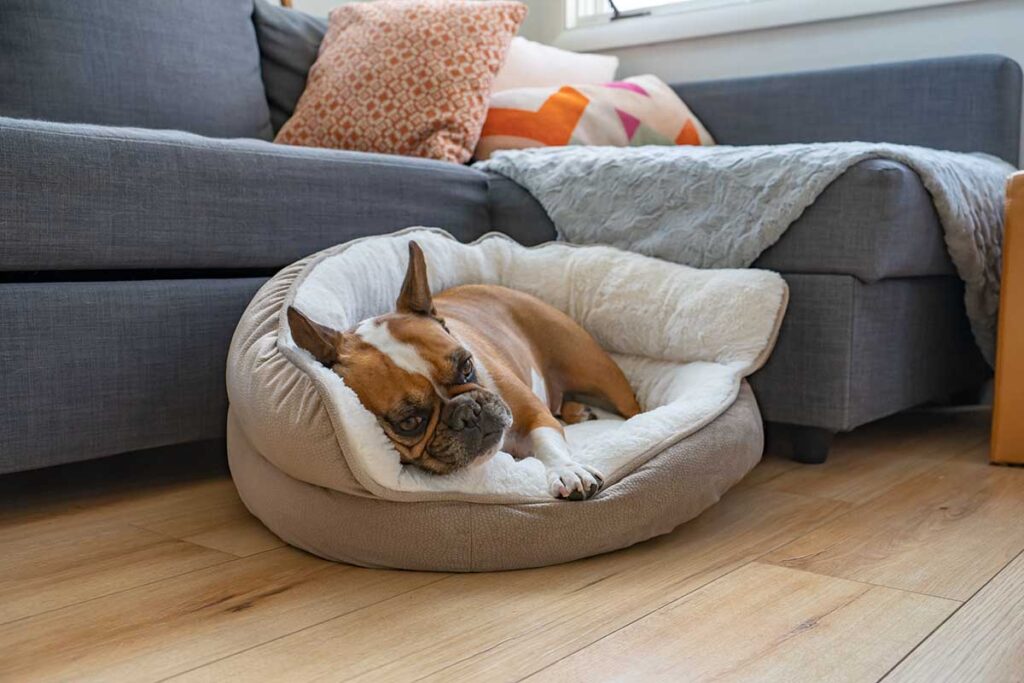
1. Behavioral Therapy
If your pet is acting out due to anxiety, you can take them to a behavioral therapist for help.
It’s important to understand that behavioral therapy is not obedience school. Instead, it focuses more on finding what is triggering anxiety in your pet to improve the relationship between you and them.
The therapist will ask you various questions to further understand the environment of the pet. Once they have insights into the situation, they’ll recommend the best course of action. This can look like anti-anxiety meds or antidepressant recommendations as well as natural remedies.
2. Distraction and Redirection
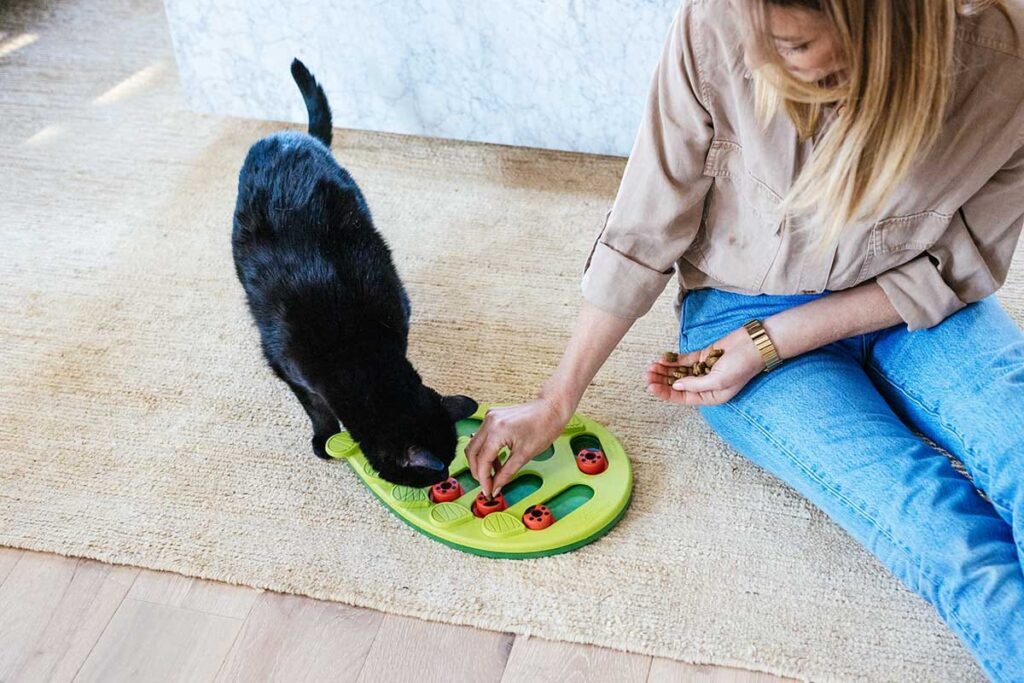
Is your animal’s anxiety triggered by particular situations? Loud noises like fireworks, heavy winds, or storms are common culprits for setting our pets off.
Try distracting them from what’s happening outside. By getting your pet to focus on something they know and enjoy, you should be able to minimize the stress they feel. Play fetch, give them a toy that offers mental stimulation, or practice tricks new and old. Don’t forget the tasty rewards!
If your pet doesn’t seem interested in treat stuffers, you may need to up the incentive and get extra smelly treats into the mix!
3. Physical and Mental Exercise
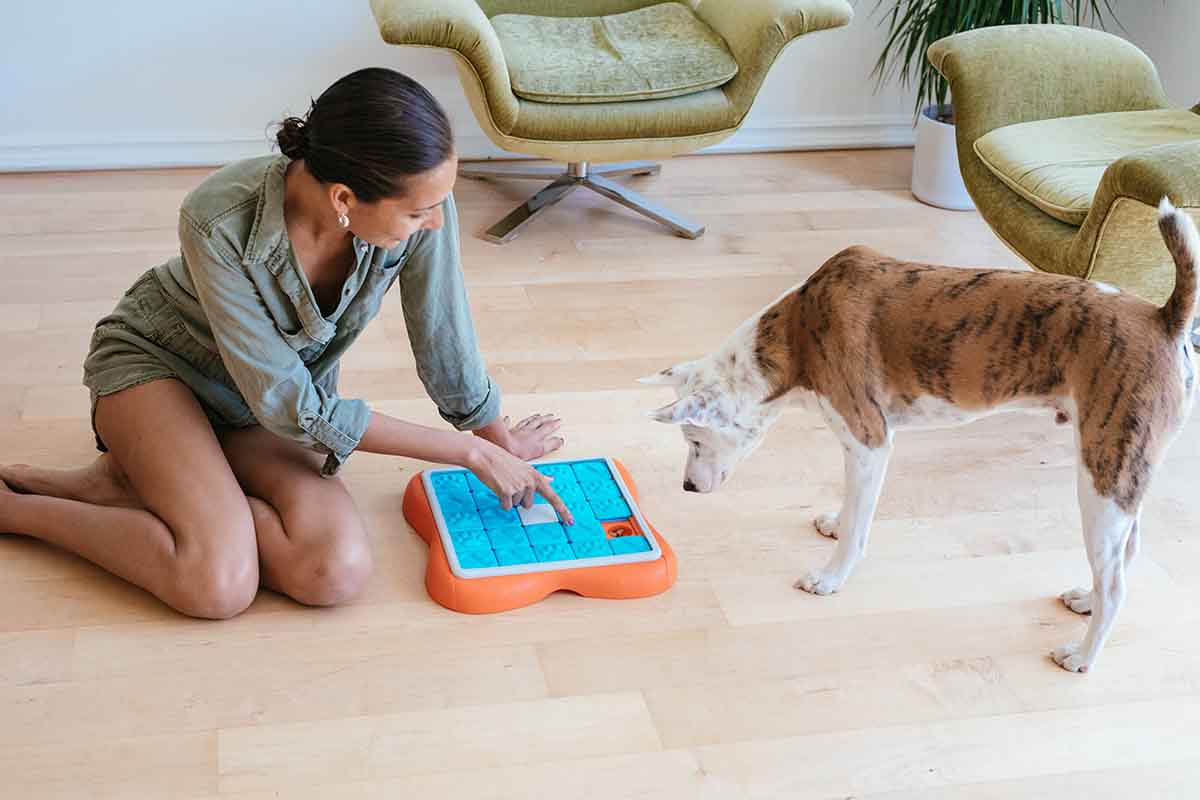
Exercise can be a great way to ease anxiety in pets on a daily basis. Sometimes, an animal’s stress can be a lack of mental stimulation or physical activity.
Taking your dog for a walk gives them the chance to burn off energy that otherwise would make their anxiousness worse. And they also receive the mental stimulation of exploring (and smelling) in the great outdoors.
Another effective way to exercise your dog’s mind is to give them a puzzle toy. Dogs get just as tired from 15 minutes of brain games as they do from a 30-minute walk!
The extra time your pet spends with you by their side may also lessen their separation anxiety. Being around pets can also help humans feel better, so it’s a win-win!
4. Dog-Appeasing Pheromone (DAP)
When female dogs lactate, they produce a pheromone that intensifies the bond between mother and pup. This pheromone has a calming effect, giving it its name, the “Dog Appeasing Pheromone (DAP).”
Scientists have synthetically replicated it to be applied to calming collars, diffusers, shampoos, calming sprays, and more. The chemical affects puppies positively, and it may be helpful in treating anxiety in adult dogs, too.
It’s odorless to humans, so you don’t need to worry about strange smells indoors.
5. Use a Thundershirt
Some dog owners use tight-fitting, slightly weighted Thundershirts to reduce their pets’ anxiety during stressful situations. The shirt acts as a pressure wrap that mimics a hug, intending to make the dog feel more secure.
As you’ve probably guessed, the garment was designed with thunderstorms in mind, but its use isn’t limited to them!
The thundershirts don’t work for all anxious dogs, so their effectiveness may have more to do with your dog’s personality. You’ll have to see how your dog or cat responds to each of these 10 tips individually to find what’s best for them.
6. Make a Nest
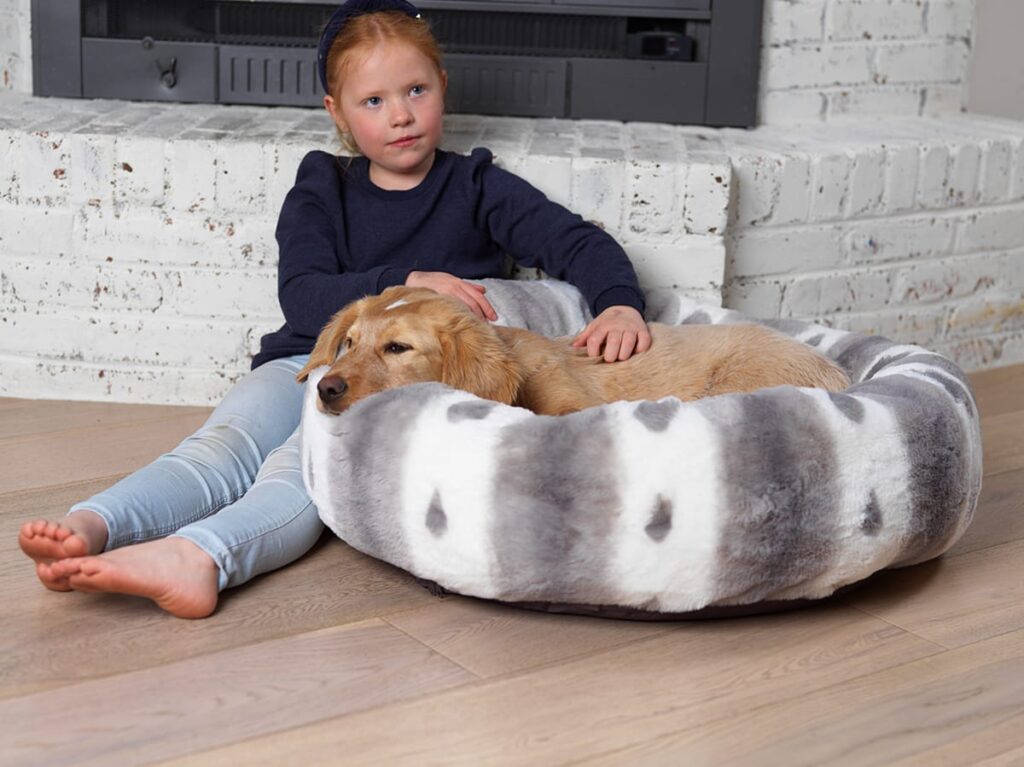
Making a comfortable nest for your pet is much like giving your dog or cat a safe space of their own.
You may have noticed that before your animal goes to sleep, it circles and scratches the spot where it wants to lie down. Such nesting behavior is instinctive, and it’s something that dogs, cats, and other animals have done for millennia.
Your pet’s nest should include a bed made of soft, comfortable material that’s easy to keep clean. A calming dog bed or pet hut can be a great option for animals that like to burrow. The enclosure of a donut cuddler bed, for example, helps pets feel safe and secure.
Add in a few favorite toys and an old item of your clothing that’s impregnated with your scent, such as an old t-shirt. That way, your pet will have the reassuring scent of their human companion even when you’re not around. You can also use DAP or Rescue Remedy on or around the nest as well.
The Original Calming Donut Shag Cat & Dog Bed
$59.99 $30.00
Give your pet more than just a dog bed! Best Friend’s by Sheri is the original creator of the most popular dog bed that has surfaced the internet in recent years: The Calming Donut Dog Bed. This innovative cuddler shag design provides better sleep, supports joints, and offers a calming, self-warming effect. The donut cuddler is carefully crafted with durable, vegan nylon and filled with AirLoft fibers,…
7. A Massage
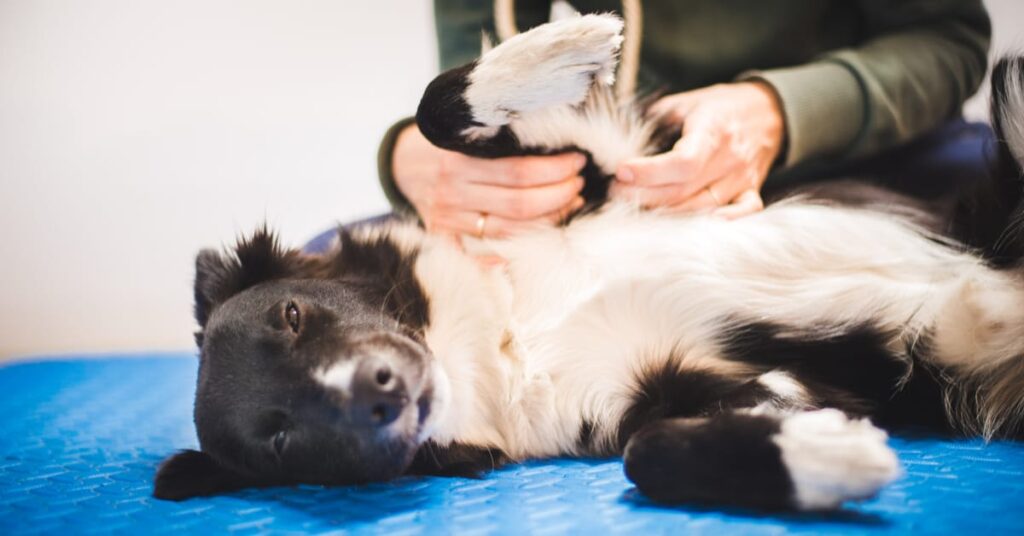
If you’ve ever had a massage, you know how de-stressing they can be. What you may not know is that animals appreciate a relaxing massage as much as we do!
Use long, slow, smooth strokes to calm your dog or cat and you’ll soon see their muscles relax.
To learn about how the TTelington Touch method using strategic, constant pressure can help calm your pet and promote good behavior, read:
8. Supplements & Essential Oils
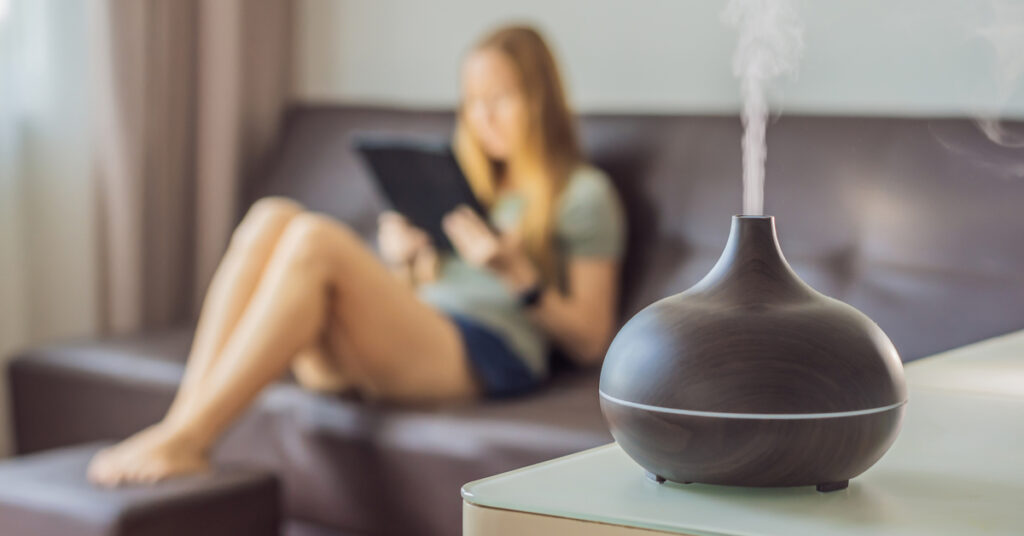
There are many calming supplements in pill or soft chew form that use all-natural ingredients like chamomile, L-theanine, melatonin, and l-tryptophan. It can help to give a calming supplement or anxiety medication ahead of a known event of phobia that triggers stress in your pet.
CBD or hemp oil is another option. CBD oil is derived from hemp and is used by many pet owners. Though popularly discussed, there have only been a few studies published on CBD for animals. This limits the true scientific data we can rely on, so most of the available information currently available is anecdotal.
When used appropriately, individuals report it helping their cats and dogs with anxiety, aggression, pain, skin conditions, tumors, and seizures.
The CBD oil used in reputable pet products contains premium quality cannabinoids with only the slightest traces of THC, so there’s no risk of your animal feeling ‘high’. They just receive the relaxing and pain-relieving qualities of the plant.
9. Dog Calming Music
There’s an old saying that goes, “Music soothes the savage beast.” It can also calm the anxious pet!
Many dog and cat owners leave a radio or TV on when they leave the house for this reason. Normal music or the music that you usually listen to is good, but you can also take it to the next step for your pet for a little serotonin boost.
Try playing specific dog or cat calming music, like “Through A Dog’s Ear” by Joshua Leeds and Lisa Spector. If your dog has travel anxiety or hates car rides, play it on a road trip for stress relief.
10. Bathe and Groom

It’s possible your dog or cat is restless, licking, panting, and stressed because they are uncomfortable. Pets have allergies, just like us!
Make sure to examine your pet’s coat and skin often for any signs of irritation. Brush through their coat and if you see signs of irritation, try bathing them with a soothing shampoo and conditioner. Consult your veterinarian before using anything new on your pets and to confirm the allergies.
Be patient. Progress will be slow and steady.
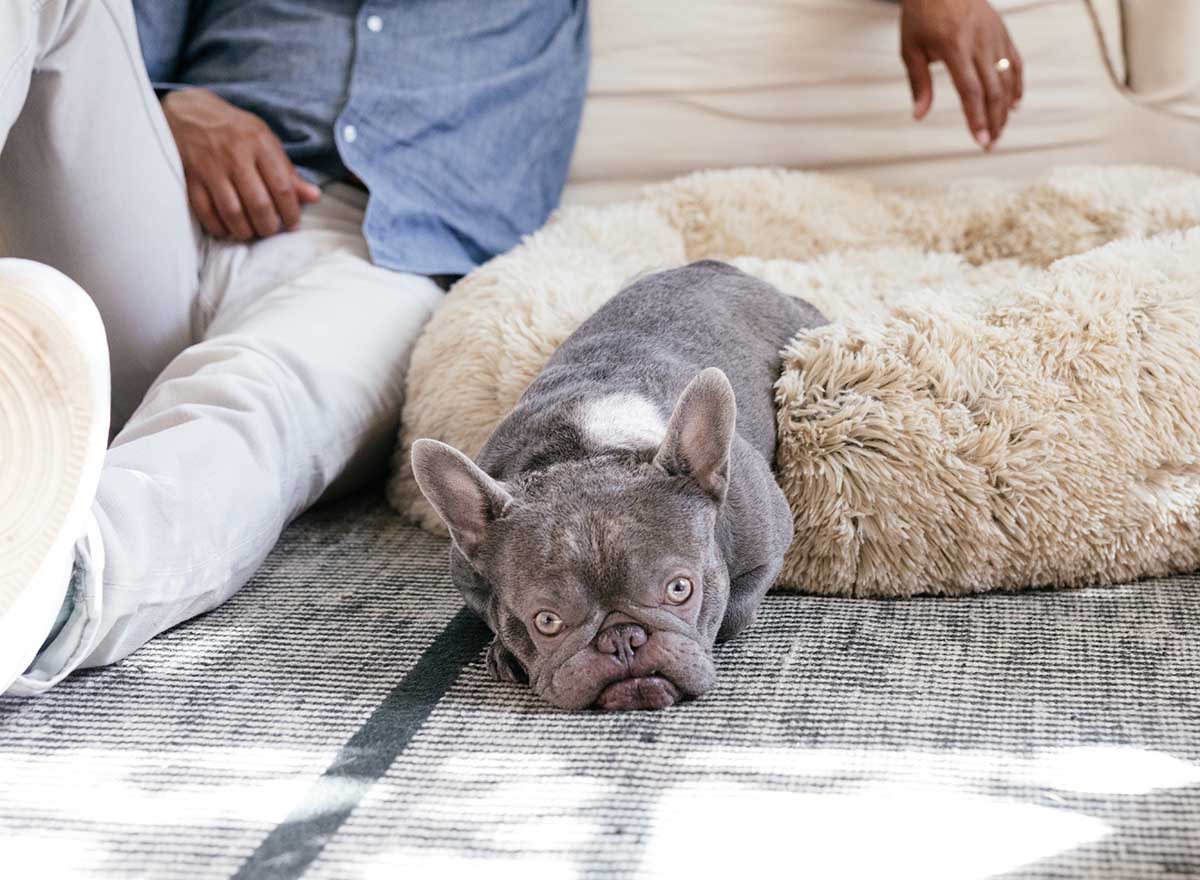
It’s easy to feel down or worried when your pet is anxious or shows symptoms linked to stress. Fortunately, in most cases, you can help them relax, shift focus, and feel less anxious.
This will take time and you may need to try a few different methods to get results, but your pet will thank you for it! It’s for their well-being, health, and happiness in the long run.
Looking for more? Check out:
